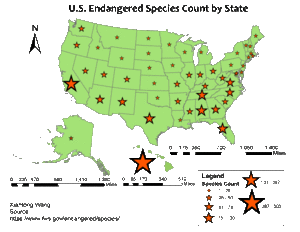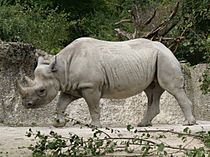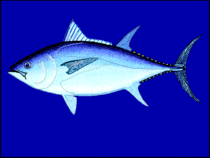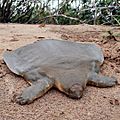Endangered species facts for kids
Quick facts for kids Conservation status
|
|
|---|---|
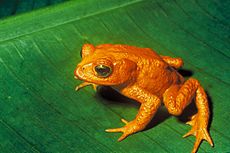 |
|
| Extinct | |
|
|
| Threatened | |
|
|
| Lower Risk | |
|
|
|
Other categories |
|
|
|
|
Related topics
|
|
 Comparison of Red list classes above and NatureServe status below  |
|
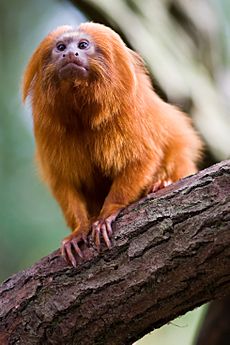
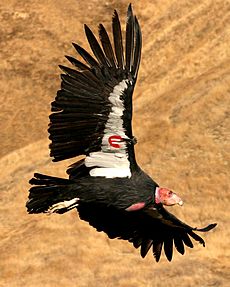
An endangered species is a type of animal or plant that is very likely to disappear forever, either from the whole world or from a certain area. This can happen because their homes are destroyed, they are hunted illegally, or new species move into their area and cause problems.
The International Union for Conservation of Nature (IUCN) keeps a special list called the IUCN Red List. This list tells us how likely it is for different species to go extinct. Many countries also have laws to protect these species. These laws might stop hunting, limit building on land, or create safe places for animals and plants to live. People are also working hard to save endangered species through things like captive breeding (where animals are raised in zoos or special centers) and habitat restoration (fixing up their natural homes).
Human activities are a big reason why some species become endangered.
Contents
What is Conservation Status?
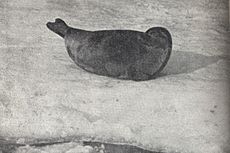
The conservation status of a species tells us how likely it is to go extinct. To figure this out, experts look at many things. They check how many animals or plants are left, if their numbers are going up or down, how well they are having babies, and what dangers they face. The IUCN Red List of Threatened Species is the most famous list that ranks species around the world.
It's thought that more than half of the world's species might be at risk of disappearing. But it can be hard to know if a species is "endangered," "rare," or "locally extinct" because we don't always have enough information. This is especially true in the ocean, where species might disappear without anyone even noticing.
Many countries have agreed to create plans to protect endangered species. These are often called Biodiversity Action Plans or Species Recovery Plans.
The IUCN Red List Explained
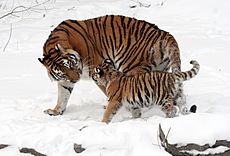
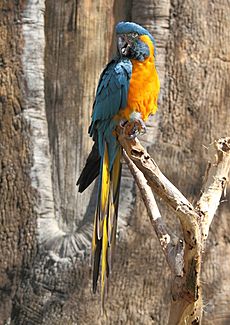
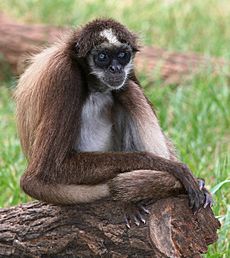
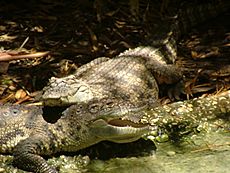
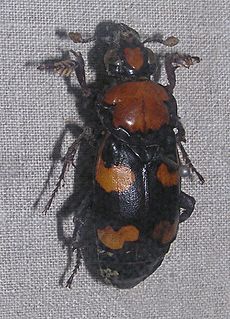
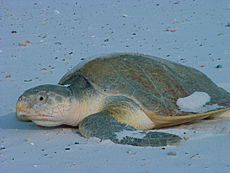
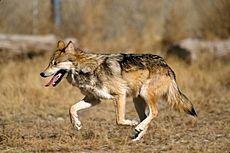
The IUCN Red List is more than just a list. It's a system that checks the global health of species. It includes species that need more study (called "Data Deficient"). It also includes species that have been fully checked. These include mammals, birds, amphibians, and corals.
Species that are "Near Threatened" or "Least Concern" have healthy populations, even if their numbers are slowly going down. The Red List uses specific meanings for "endangered" and "threatened." "Endangered" (EN) species are in the middle of being "Vulnerable" (VU) and "Critically Endangered" (CR). In 2012, the IUCN Red List showed that 3,079 animal species and 2,655 plant species were endangered worldwide.
Endangered Species Around the World
Brazil's Amazing Wildlife
Brazil is one of the countries with the most different kinds of plants and animals in the world. It has the Amazon rainforest, the Atlantic forest, and the Cerrado savanna, among other special places. Because some of its rainforests are so dense, wildlife trafficking (illegal animal trade) is a big problem. This, along with deforestation (cutting down forests), is one of the main reasons species in Brazil become endangered.
Brazil has many laws and government groups to protect its animals and plants. They fine people or companies involved in environmental crimes and take away illegally caught wildlife. Even though these groups collect information, they don't always work together perfectly to stop wildlife trafficking. However, both government groups and NGOs (non-profit groups) in Brazil agree that birds make up about 80% of the trafficked species.
The problem is that the rarer an animal or plant becomes, the more valuable it is on the black market. This makes it even more likely for those species to become endangered.
In the past, Brazil successfully saved the golden lion tamarin from extinction. Big campaigns by NGOs and the government helped people learn about the tamarin. They even put pictures of the golden lion tamarin on the 20 reais Brazilian banknotes. These efforts helped the species move off the "critically endangered" list.
Protecting Species in the United States
In the United States, there's a link between how many people live in an area and how many endangered species are there. Data from 1970 to 1997 suggests that more human activity can lead to more species being in danger.
The Endangered Species Act
Under the Endangered Species Act of 1973 (ESA) in the United States, species can be listed as "endangered" or "threatened." The Salt Creek tiger beetle is an example of an endangered insect protected by this law. The US Fish and Wildlife Service and the National Marine Fisheries Service are in charge of listing and protecting these species. Adding a species to the list can be a long process.
Some parts of endangered species laws can be debated. For example, people discuss how to decide which species get on the list and how to take them off once their numbers recover. There are also discussions about how restrictions on land use affect landowners. Groups like hunters and industries such as oil, construction, and logging have sometimes made it harder to create endangered species laws.
Being listed as endangered can sometimes make a species more attractive to collectors and poachers. However, in places like China, raising turtles on farms might help reduce the pressure on wild, endangered turtles.
The Endangered Species Act of 1973 has been very helpful in bringing species back from the brink. For example, 19 species have been taken off the list because their populations recovered. Also, 93% of listed species in the northeastern United States are either recovering or have stable populations.
Currently, 1,556 endangered species are protected by U.S. law. However, this number doesn't include all species that are at risk but aren't yet under legal protection. Experts believe that between 7% and 18% of all known animals, fungi, and plants in the United States are close to extinction. This is much more than the number currently protected by the ESA.
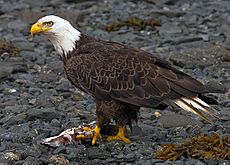

For a long time, too much hunting and fishing have been big problems. Famous examples of species that disappeared because of humans include the dodo, passenger pigeon, and great auk. Animals like the bald eagle, American bison, and sea turtle were hunted so much they almost vanished. Many of these animals were hunted for food but later became targets for sport.
Thanks to huge efforts, the bald eagle is now considered "Least Concern" on the Red List, meaning it's no longer in danger. Today, overhunting is still a problem for some whale populations. Large whales like the blue whale and humpback whale are still on the Endangered Species List. Actions have been taken to reduce whaling, such as banning whaling in U.S. waters and creating international agreements. But some countries still hunt whales for "scientific purposes." Overhunting, climate change, and habitat loss are major reasons why species become endangered.
Canada's Efforts
In Canada, endangered species are protected by the Species at Risk Act. A species is considered threatened or endangered when it is very close to disappearing from the world or from Canada. Once a species is listed, the Act requires a plan to be made to help its population recover. As of 2021, the Committee on the Status of Endangered Wildlife in Canada (COSEWIC) has listed 369 species as endangered in Canada.
India's Wildlife
The World Wide Fund-India is worried about the future of several animal species in India. These include the Red Panda, the Bengal Tiger, the Ganges River Dolphin, and the Asian Elephant.
India signed the Wildlife Protection Act of 1972 and joined an international agreement in 1976. These actions help prevent poaching from harming India's wildlife.
How Invasive Species Harm Wildlife
When new species are brought into an area where they don't naturally belong, they can cause big problems for the local ecosystem. These are called alien or invasive species. Sometimes, invasive species compete with native species for food or hunt them. Other times, they can upset the natural balance, leading to unexpected declines in native species. New species can also bring diseases that native species have never encountered before and have no way to fight off.
How Can We Help Endangered Species?
Captive Breeding Programs
Captive breeding is when rare or endangered species are raised in safe, controlled places like wildlife reserves, zoos, or special conservation centers. The goal of captive breeding is to save species from extinction and help their populations grow strong enough to survive on their own.
This method has worked for many species for a long time. One of the oldest examples is the Père David's deer, which was bred in royal collections. However, captive breeding can be hard for animals that move around a lot, like some migratory birds or fish. Also, if there are too few animals in the breeding program, they might become too closely related. This can make them less healthy and less able to fight off diseases.
In 1981, the Association of Zoos and Aquariums (AZA) started a Species Survival Plan (SSP). This plan helps protect specific endangered and threatened species through captive breeding. There are over 450 SSP Plans that help manage populations and guide breeding to keep animals healthy and diverse. These programs are often used as a last chance to save a species. SSP Programs also help with species recovery, treating wildlife diseases, and other conservation efforts. Some animals in SSP programs include giant pandas, lowland gorillas, and California condors.
Private Farming for Conservation
While poaching (illegal hunting) greatly reduces endangered animal populations, legal, private farming can actually help them grow. For example, private farms have significantly increased the numbers of the southern black rhinoceros and southern white rhinoceros. Experts say that it's easier to protect these animals when they are privately owned. This is because local communities can get involved in conservation and there are financial reasons to protect rhinos, like eco-tourism or selling them.
In 2015, scientists in Australia successfully bred southern bluefin tuna in tanks on land. This shows that fish farming might be able to save this species from overfishing.
Images for kids
-
Even though it's endangered, the sea otter has a fairly large population.
-
A photo from the 1870s showing American bison skulls. By 1890, too much hunting had reduced their population to only 750.
See also
 In Spanish: Especie en peligro de extinción para niños
In Spanish: Especie en peligro de extinción para niños
- Biodiversity
- Critically Endangered
- Habitat fragmentation
- International Union for Conservation of Nature (IUCN)
- Threatened species
- World Wide Fund for Nature (WWF)
IUCN Red List


